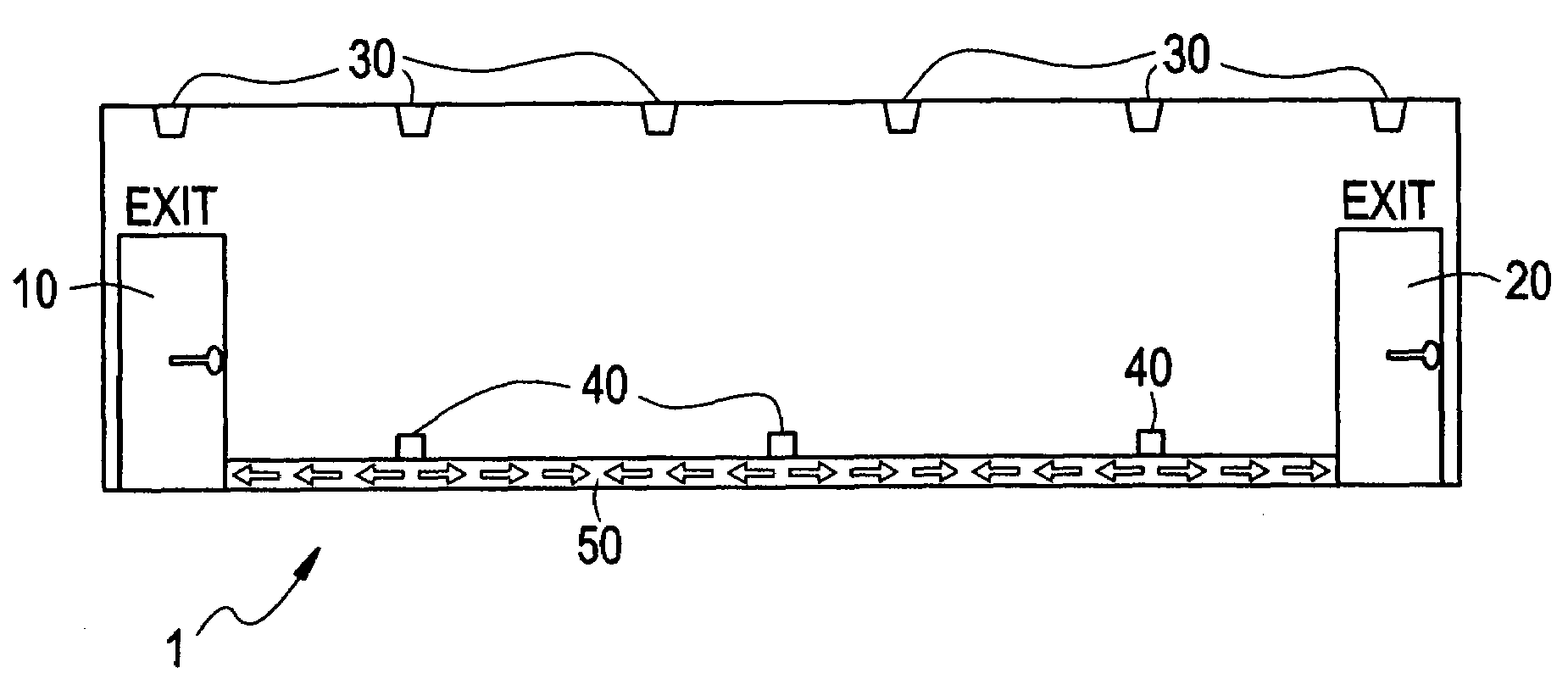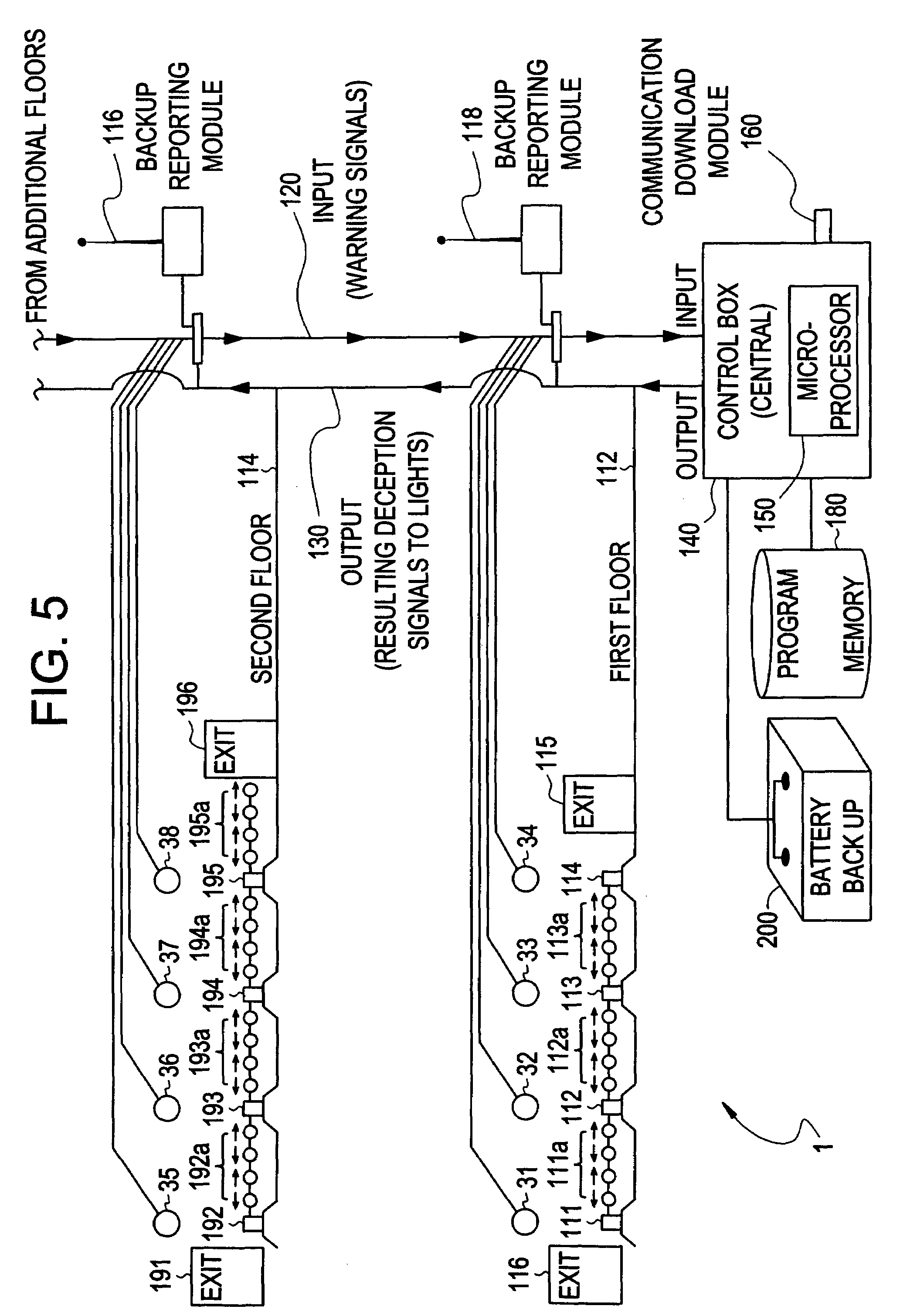Intelligent directional fire alarm system
a fire alarm system and intelligent technology, applied in the direction of fire alarms, signalling systems, fire alarm smoke/gas actuation, etc., can solve the problems of many deaths and injuries, the presently known alarm system is both expensive and difficult to produce, install and maintain
- Summary
- Abstract
- Description
- Claims
- Application Information
AI Technical Summary
Benefits of technology
Problems solved by technology
Method used
Image
Examples
Embodiment Construction
[0024]Reference will now be made in detail to the present preferred embodiment of the invention as illustrated in the accompanying drawings.
[0025]In accordance with the present invention there is provided an intelligent directional fire alarm system having an evacuation or exit direction indication system, preferably comprising a multiplicity of fire alarm sensors as threat sensing nodes, a multiplicity of indicator units, and directional lighting modules, said directional lighting modules having at least three electroluminescent lamps in a substantially linear arrangement so that the directional lighting modules may be interconnected from end to end, as needed, in order to track the length of rooms and / or corridors towards an exit or exits. Included within such a unit would be a means for potentially illuminating all electroluminescent lamps on a repeated basis in sequential order, from one end of the linear arrangement to the other end of the linear arrangement as a directional in...
PUM
 Login to View More
Login to View More Abstract
Description
Claims
Application Information
 Login to View More
Login to View More - R&D
- Intellectual Property
- Life Sciences
- Materials
- Tech Scout
- Unparalleled Data Quality
- Higher Quality Content
- 60% Fewer Hallucinations
Browse by: Latest US Patents, China's latest patents, Technical Efficacy Thesaurus, Application Domain, Technology Topic, Popular Technical Reports.
© 2025 PatSnap. All rights reserved.Legal|Privacy policy|Modern Slavery Act Transparency Statement|Sitemap|About US| Contact US: help@patsnap.com



